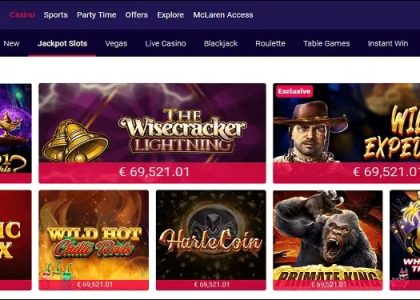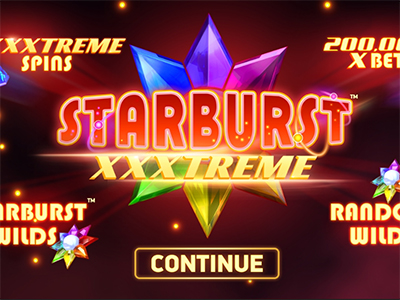However, the availability of specific futures contracts may vary depending on the exchange and broker. It is imperative to know the working of the futures market along with what is futures trading. The futures market works by allowing traders to buy and sell contracts for the purchase or sale of a particular commodity or financial instrument at a predetermined price and date in the future. These contracts are traded on organized exchanges, such as the Multi Commodity Exchange (MCX) and Intercontinental Exchange (ICE).
Strategies for Successful Trading in the Futures Market
But just like in superhero movies, great power comes with great responsibility (and risk). When you trade futures, you’re not actually buying a mountain of cheese, barrels of oil, or bars of gold. Having a strong awareness of technical analysis is also important for trading futures. This is essential for spotting trading opportunities as bdswiss forex broker review well as managing risk. The use of loaned money from a brokerage means that traders require less capital to get started.
Risk Management in Trading
- On the other end of the contract is a seller who is responsible for delivering those items at a specified price.
- Investors can trade futures contracts on many different exchanges, for example, the Chicago Board of Trade (also known as CBOT) and the New York Mercantile Exchange (also known as NYMEX).
- The same applies to stock index futures — if you trade an S&P 500 futures contract, you’re not buying actual shares of the 500 companies in the index.
- If the price declines, the trader will take an offsetting position to close the contract.
More than 29 billion futures contracts were traded in 2023, according to data from the Futures Industry Association (FIA). You can’t predict the future, but you can try to predict — or hedge against — how much certain goods will cost when they arrive. A futures contract obligates a buyer to take delivery of a good, or commodity, on a specific date. On the other end of the contract is a seller who is responsible for delivering those items at a specified price. Another draw is that some futures trades may qualify for preferential tax rates.
Let’s say that Trader A believes that the WTI oil price benchmark will rise in value, and they wish to take advantage of this by trading futures contracts. Taking a long position involves purchasing a contract with the expectation that the underlying asset will rise from the spot price (this is the price for immediate settlement and delivery). If the price of the said asset has increased from the time of purchase to the date of expiry, the trader can sell the contract at a higher price and make a profit.
Leverage (using a small amount of capital to control larger contracts)
These futures include those for Treasury bills, notes, and bonds, as well as on interest rate benchmarks. Treasury futures allow investors to speculate on or hedge against changes in interest rates, which affect the value of Treasury securities. For example, T-note futures are widely used to hedge against fluctuations in 10-year Treasury note yields, which are benchmarks for mortgage and other important financial rates.
Decide whether to go long or short
- A futures trading plan will revolve around your specific trading strategy.
- They would only do this if they feel the market has moved in their favour.
- Joey Shadeck is the Content Strategist and Research Analyst for StockBrokers.com.
- However, investors should keep in mind that harnessing leverage can also increase potential losses.
- But the learning curve hasn’t stopped increasing numbers of investors from entering futures markets in recent years.
However, you should remember that when trading with margin, your end profit or loss is determined by the full size of the position, and not just the margin required to open it. Futures are priced according to the spot value of their underlying market, plus any spread or commission that you pay a broker for executing your trade. Other markets, such as gold or silver commodity futures are often preferred by traders who have lower risk appetites and enjoy markets with lower volatility. Remember, we offer futures and forwards on indices, bonds, interest rates, shares, forex and ETFs.
They may also be involved in clearing and settlements, standardising contracts, and providing market data. Additionally, futures also allow consumers of a commodity to lock in the purchase price for delivery at a future date. Agricultural commodities such as corn, wheat, and soybeans are usually the first things that come to mind when a new investor thinks about a futures contract. One reason for the development of futures was for farmers to manage risk and reduce uncertainty—also known as risk management. Details that are typically included in an option on a futures contract are the product, the future’s contract month, and the set price to buy or sell the futures contract. Suppose you buy a crude oil futures contract, and you have agreed to purchase 1,000 barrels of it at a price of $75.72 by September 22nd.
However, if the spot price is lower at delivery, the producer benefits by having locked in a higher sale price. Leverage magnifies returns, so it can be a major benefit when you’ve earned a profit, but can wipe you out quickly in the event of a loss. Just like any other strategy or trading method, there are some key benefits and drawbacks that you should be aware of before you start.
Before trading any asset class, customers must read the relevant risk disclosure statements on our Agreements and Disclosures page. System access and trade placement and execution may be delayed or fail due to market volatility and volume, quote delays, system and software errors, Internet traffic, outages and other factors. Experienced futures traders always have a plan before entering a trade. This plan includes how many contracts to buy or sell, how much risk they are willing to take, how much money they are willing to lose on a single trade and a price level to take profits.
You have done your analysis and think that markets are underestimating the risk of further geopolitical tensions, which could lead to a sudden increase in oil prices. Traders coming from an FX/CFD background will also have to get used to a different system of position sizing. Some contracts have a large notional value, which is why exchanges also offer mini and micro futures — essentially a smaller version of the original futures contract. Exchanges do much more than just provide participants with access to the futures market.
Set your stops and limits
A futures contract is an agreement to buy or sell the underlying asset at a predetermined price on a specific future date, committing both parties to fulfill the contract at maturity. By contrast, an option gives the buyer the right, but not the obligation, to buy (the call option) or sell (the put option) the underlying asset at a set price before the option expires. Currency or forex trading involves making money or hedging risk in foreign exchange rate changes. Dollar currency futures, there are also e-Micro Forex Futures contracts that trade at one-10th the size of regular currency futures contracts. The range of assets underlying futures covers everything from agricultural products to financial indexes. As of early 2024, the most traded futures were in equities (65% of futures trading by volume), currencies (9%), interest rates (9%), energy (5%), agriculture (4%), and metals (4%).
More advanced traders may want a platform that provides application programming interface (API) access to allow algorithmic trading functionality. Active traders should select a futures platform with a mobile trading app that lets them execute trades and manage positions on the go. ig forex broker review Depending on your broker and your account status with that broker, you may be eligible to trade futures. A futures contract is similar to a forwards contract, where a buyer and seller agree to set a price and quantity of a product for delivery at a later date. Both types of contract can be used for speculation, as well as hedging.
Their only interest is to earn a profit from trying to predict the price changes, which is why they close investment managers their positions before the futures contracts expire. As an investment tool, futures contracts offer the advantage of price speculation and risk mitigation against potential market downturns. Taking a contrary position when hedging could lead to additional losses if market predictions are off. Also, the daily settlement of futures prices introduces volatility, with the investment’s value changing significantly from one trading session to the next. The buyer of a futures contract must take possession of the underlying stocks or shares at the time of expiration and not before. Buyers of futures contracts may sell their positions before expiration.
On the other hand, a futures trading plan that’s centered around fundamental analysis might generate buy or sell signals based on crop or energy inventory reports. For instance, a trader may short an oil futures contract if weekly oil inventories grow at a faster pace than analysts had expected. Of course, some traders may incorporate both technical and fundamental analysis into their futures trading plan. As with trading stocks or other financial assets, it’s important for investors to develop a plan for trading futures that outlines entry and exit strategies as well as risk management rules.
These contracts were initially created to help businesses navigate unexpected costs. Technical analysis is a trading discipline employed to evaluate investments and identify trading opportunities by analyzing statistical trends gathered from trading activity, such as price movement and volume. Learn what technical indicators are, how they help traders analyze price and volume, and how tools like RSI, MACD, VWAP, and ATR can improve trade decisions when used with price action. One of the biggest differences between futures and other types of trading is leverage. Instead, you’re trading something more like a magical receipt – a contract that changes value as the price of the real thing moves up and down.





